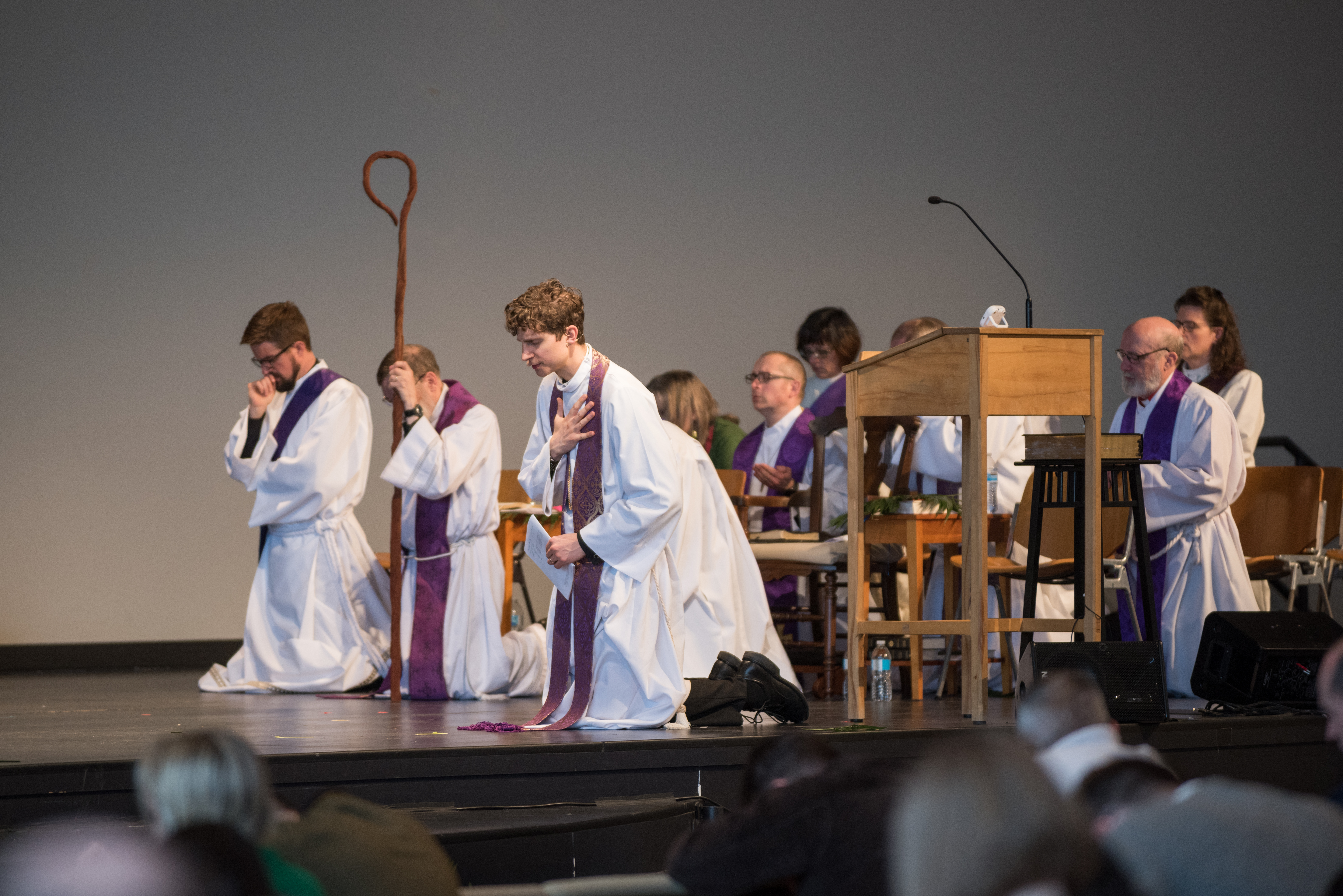These robes are known as “vestments.” Vestments are primarily worn by clergy, who are leaders in the church who have been ordained to special offices. (Click here to learn more about ordination.) But as you’ll see, some of the vestments can be worn by anyone (so get down to Wheaton Religious today!). Ultimately, it is out of respect for the holiness of the Word and table that we wear these unique garments.
The precedent for vestments comes from the Bible’s instructions for priestly ministry (see Exodus 28, for example), and the Psalms, which direct us to worship in holy attire. Vestments remind people that something unusual and sacred is happening, and their beauty points to the beauty of God and of worshiping him.
Vestments also serve as equalizers. This is ironic, because at first they seem to set people apart when you walk into our church. But once you get used to seeing leaders in vestments, you realize that they diminish the distinctiveness of any one leader or clergy member. Like a police officer in their uniform, vestments signify that the priest, deacon, or lay leader is part of something bigger than themselves; it’s not about them, it’s about the office and the function that it serves for the church.
Without vestments, you could be as easily distracted by the fashion of the clothes that the pastors are wearing each week, and what those choices might signify. With vestments, it doesn’t change (except for the seasonal color). The long-term effect is that you pay less attention to the appearance of any individual clergy.
Like a police officer in their uniform, robes signify that a priest is part of something bigger than himself; his appearance is not about him, but about his service.
—Fr. Brett Crull Tweet
Examples of Vestments You Might See
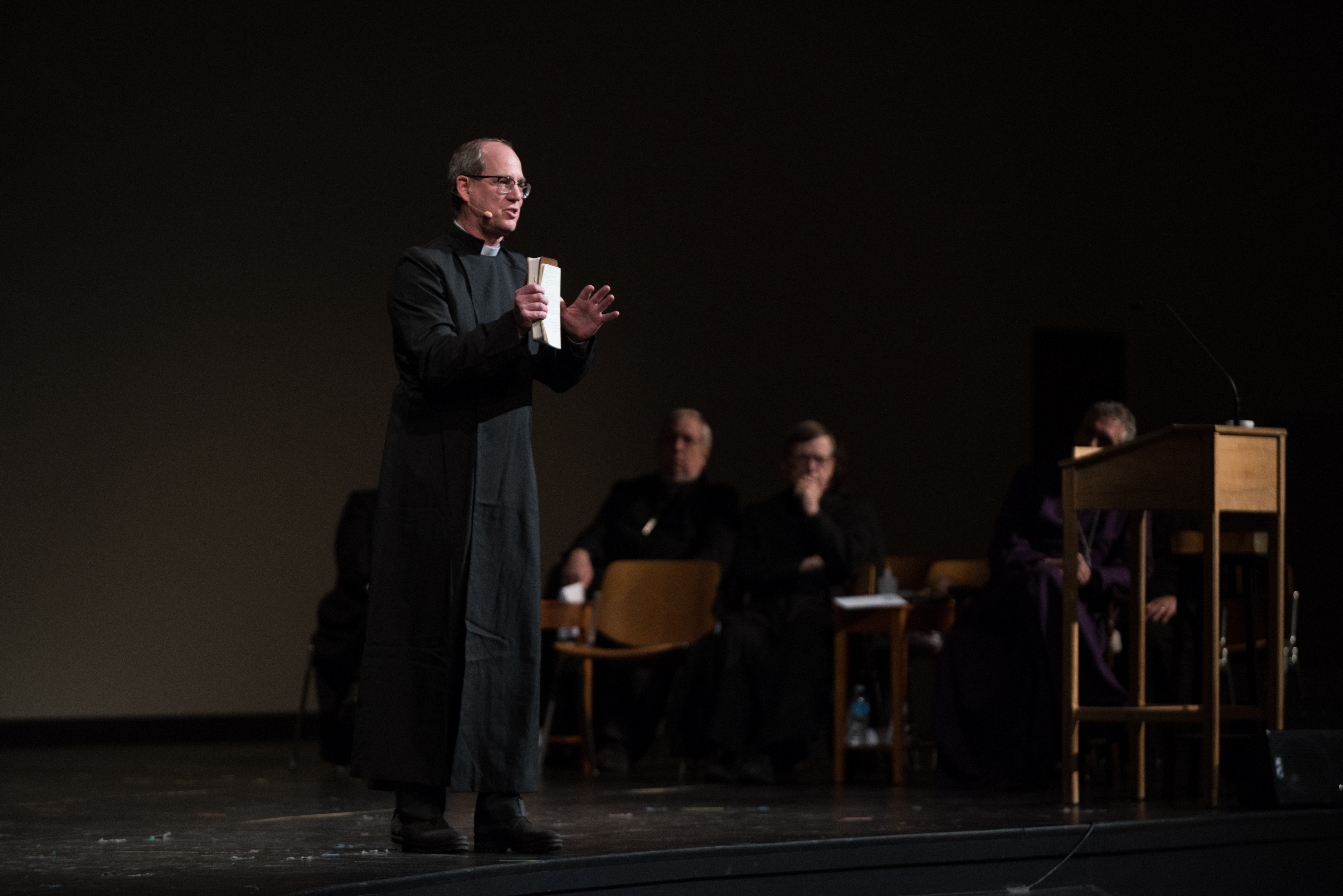
Black Cassock: This is streetwear, not liturgical; in some traditions is the everyday garment for clergy. It is all black because it is a sign of death to the world that clergy chooses in their receiving of an ordered life through ordination. However, this vestment is not restricted to the clergy. Anyone can wear it for the same reasons.
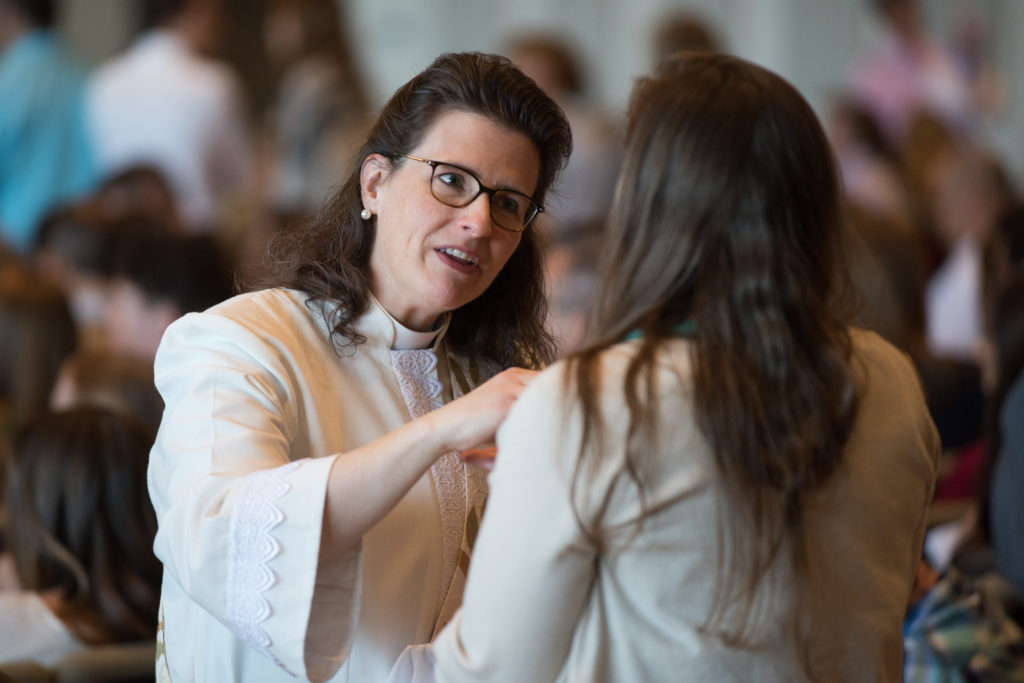
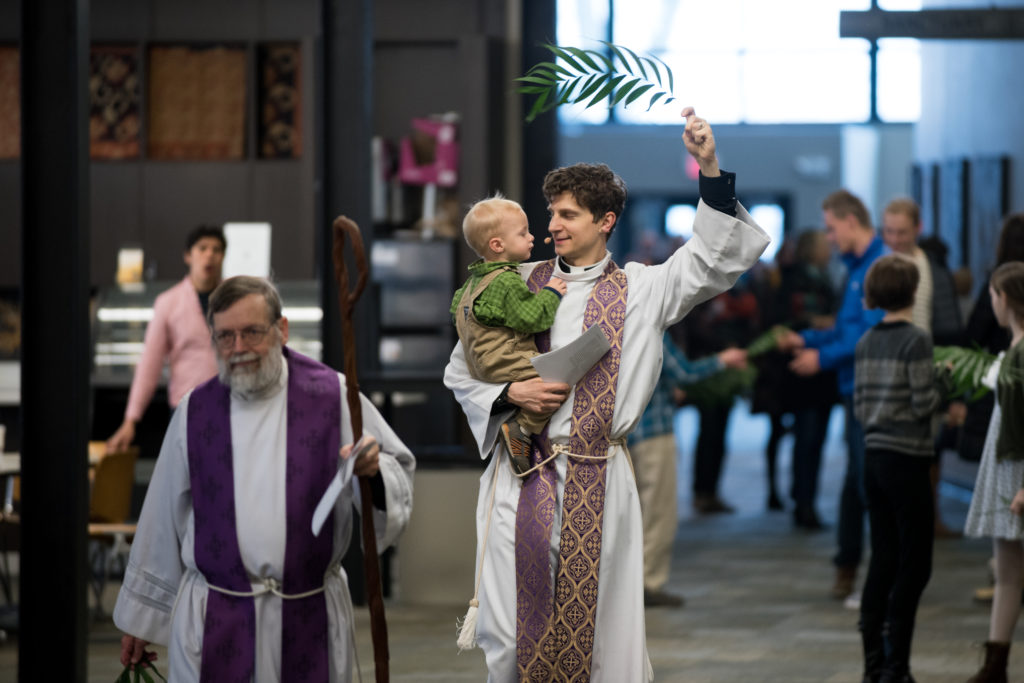
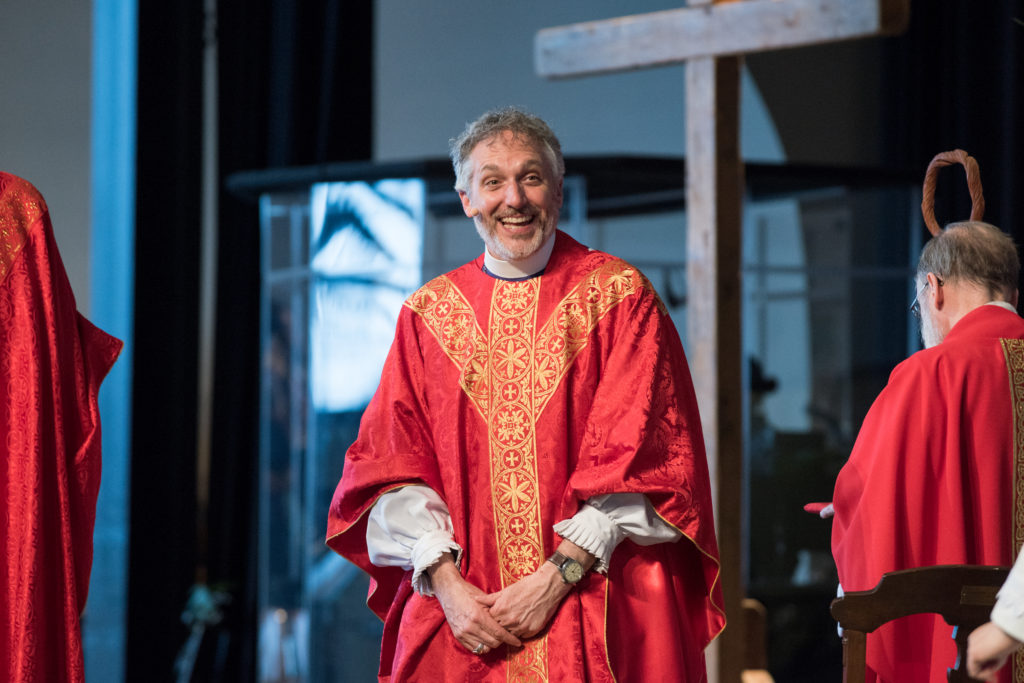
Chasuble: This is the “big poncho” that the Celebrant wears. It signifies the love of God and is specifically tied to the administration of the Sacraments.
Hey there! Got more questions about Anglicanism?
Subscribe to our email list and never miss a blog post:

